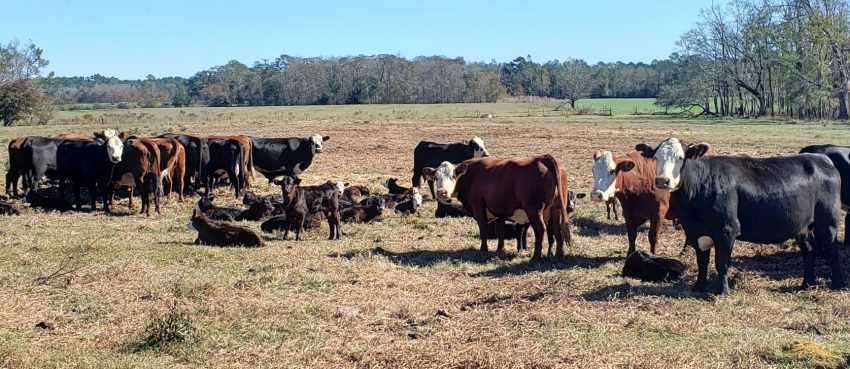Paul Beck, Oklahoma State University State Extension Beef Cattle Nutrition Specialist
We have tight cattle supplies and record cattle prices, but costs of production have also increased. The industry is still in a place that if you are not in control of your production costs, selling calves for record prices may still be below breakeven. There are 10 activities that, in my opinion, are important for managing a profitable cow-calf operation.
- Know your costs of production – Beef cattle Standard Performance Analysis of cowherds across the Great Plains show that high net income producers have 43% lower cost of production than low net income producers. It also allows for more effective marketing, risk management and setting production goals and makes it easier to identify places for improvement.
– - Have a defined calving season that matches your environment – Produces a more uniform calf crop to market, larger uniform groups at auction markets receive $5/cwt compared to single head lots. This also allows for better health and nutritional management and management of calves pre- and post-weaning. This is the foundation for development of least cost winter nutrition programs.
– - Selection of replacement heifers for fertility and longevity – Heifers that have their first calf early in the calving season tend to rebreed earlier and calve early in subsequent years, and heifers that reach puberty before their first breeding are more fertile. Assessing Reproductive Tract Scores of heifers 30 to 60 days before their first breeding season can help sort out the heifers that have not reached puberty and are more likely to breed late.
– - Pregnancy testing and culling cows – Culling open cows obviously will decrease winter feeding costs, but also culling old cows, infirm cows, unsound cows, and cows with poor dispositions can improve calf performance and decrease calf death losses. Culling open cows and not selecting heifers out of these cows as replacements will improve reproductive efficiency over time and increase calving rate.
– - Improve forage management – The forage resource is the foundation of cow production. Improved management will increase carrying capacity of the land, improve cow and calf nutrition, increase productivity of livestock, and decrease cost per unit of forage produced. Reduced reliance on feed and hay is a key to decreasing costs and increasing profitability.
– - Hay testing and least cost supplementation – knowledge of hay quality will allow you to match the hay being fed to the cow’s nutrient requirements, and has the potential to reduce or totally replace supplementation. The supplement being fed and supplement rates can better match what is needed by the cow.
– - Crossbreeding with a superior sire – Heterosis or hybrid vigor is the only free thing you can expect in the cattle business. Crossbred cows with hybrid vigor have higher conception rates, weaning rates, weaning rates, and longevity. These benefits combine to increase the pounds of calf weaned per cow exposed to a bull by 15 to 25%. Increasing sire quality leads to higher weaning weights, post-weaning growth, and improved marketability.

Even with record calf prices, managing production costs is still important for managing profitability. A nice group of Washington County crossbred commercial calves, sired by a bull selected based on his genetic merit. Photo Credit: Mark Mauldin, UF/IFAS
–
- Have a designed herd health program – A close veterinary-client relationship pays dividends for your business. A good herd health program will reduce cow death loss and increase cow productivity. More productive cows with good immune systems will produce more and better colostrum which will reduce calf morbidity and death loss…and makes for more productive calves.
– - Add value with preconditioning and retained ownership past weaning – Preconditioning added $15 to $20/cwt premium on calves over the last few years. Extending ownership will allow you to capture more of their true value. This can be a good thing or bad thing, depending on your calf’s quality.
– - Reduce debt and keep expenses low – Referring again to the beef cattle Standard Performance Analysis, high profit producers have lower costs of production with less invested per cow in all asset categories than low profit producers, but especially less invested in machinery and equipment and real estate. Low profit producers have more total debt on a per cow basis.
–
Summary
The most profitable producers tend to have higher pregnancy rates, calving and weaning percentages, and thus higher pounds weaned per cow exposed to a bull than the least profitable producers. Profitability of the cow-calf enterprise is controlled by a web of production and economic factors, but is rarely associated with maximized weaning weight.
- UF NuCitrus – Added Protein Makes Citrus Trees Tolerant to Citrus Greening - October 31, 2025
- Peanut Crop Insurance: What’s Available and What’s New - October 31, 2025
- Cotton Marketing News: Prices and Strategies - October 31, 2025
